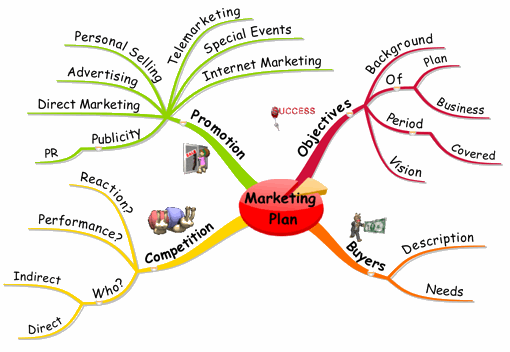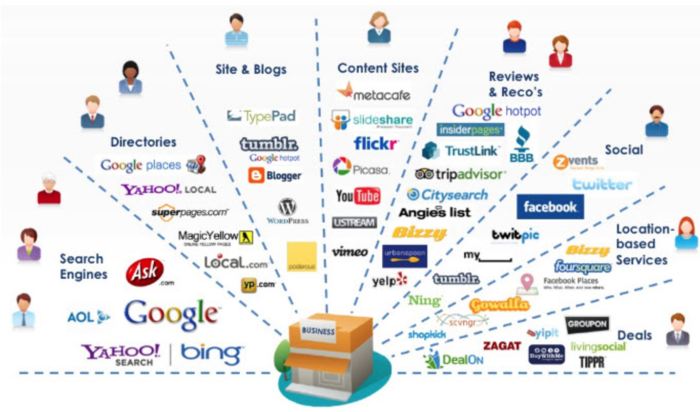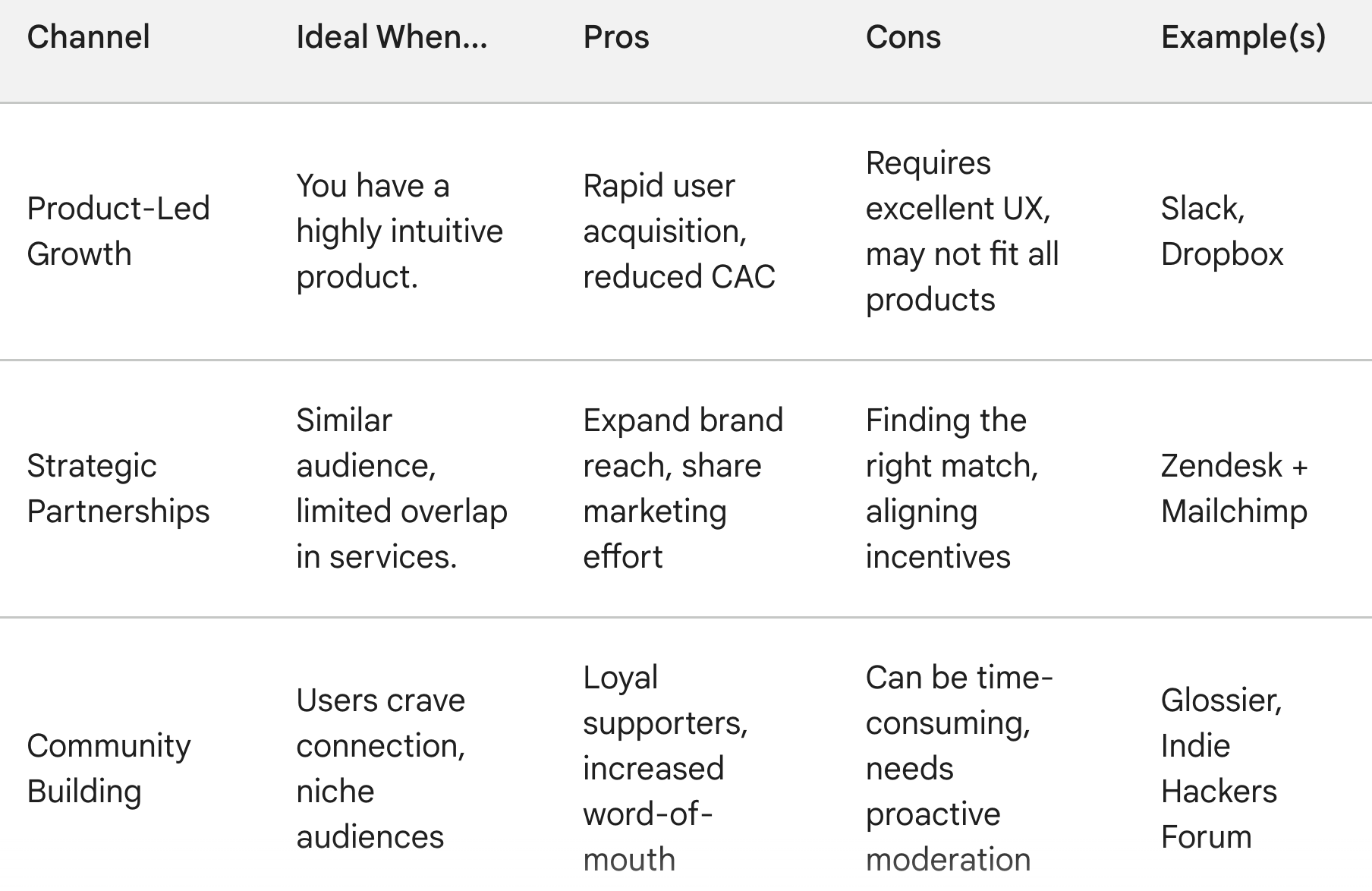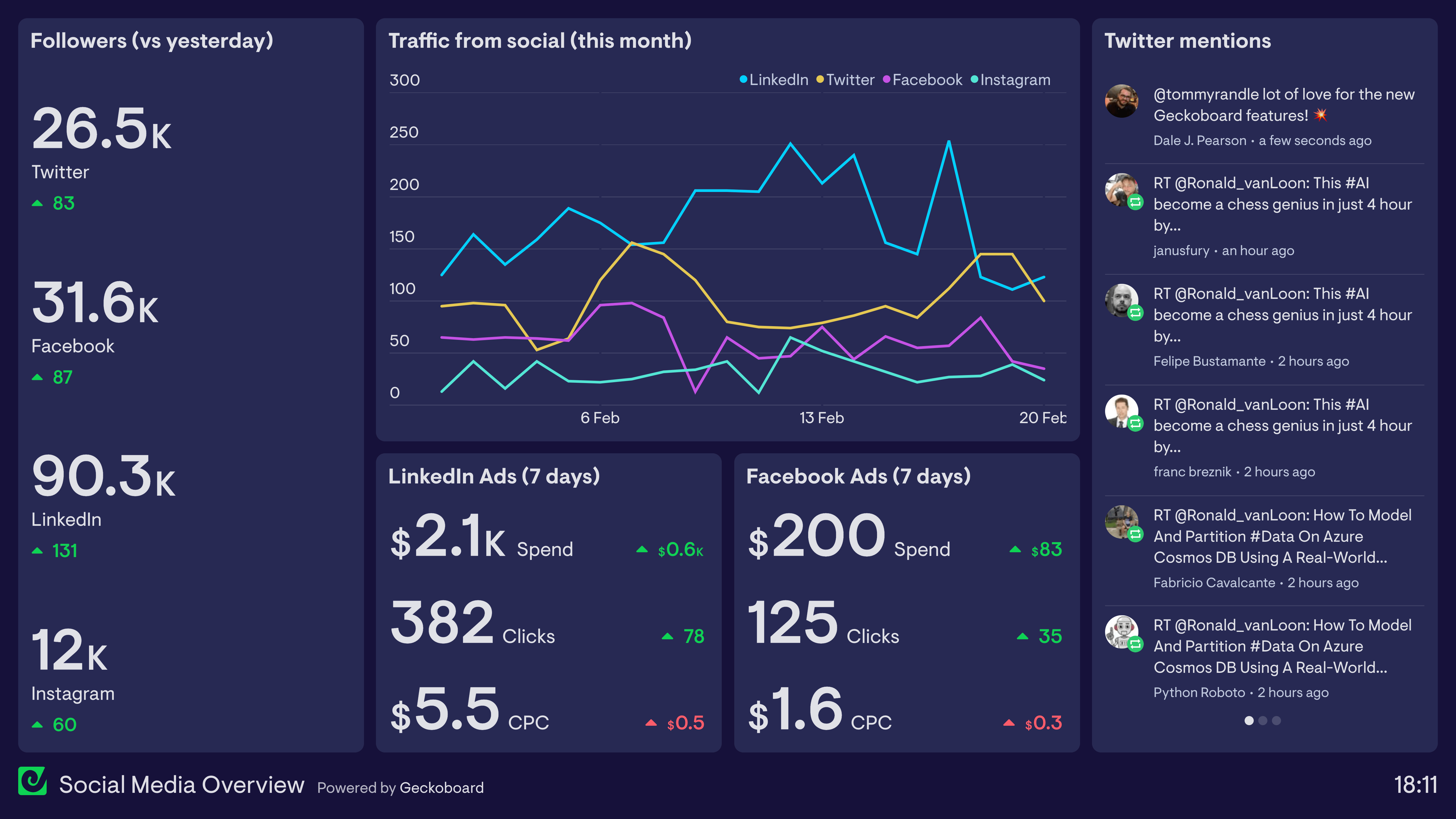Let's face it, scaling a business isn't just strategizing and spreadsheets. It's excitement, it's doubt, it's late nights fueled by too much coffee. Growth marketing is what gets you through the messy phases into long-term success. I've been in your shoes, I understand the unique pressures. In this blog, let's break down the strategies, mindsets, and the little bit of magic that leads to scalable growth.
Understanding Your Current Stage and Vision

The foundation of effective growth marketing isn't about copying trending tactics. It begins with introspection. Here are key questions to address:
- Where are you in your business journey? Are you past product-market fit, with predictable revenue, or still perfecting it? Your stage informs your strategies significantly.
- What does scaling success look like? Is it revenue-focused? Is expanding your user base the metric? Have a clear, quantifiable vision to avoid spinning your wheels on misguided efforts
- What are your limitations? Every business faces them. Do you have an undersized team, a limited budget, or tech restrictions? These factors influence which growth marketing avenues make sense.
Taking the time to answer these honestly will ensure you make laser-focused strategy decisions, saving you time and resources eventually.
The Power of a Buyer-Centric Mindset

It's tempting to fall in love with the latest shiny marketing trend. But to ensure growth strategies move the needle, not just your vanity metrics, start with your buyers.
| Attribute | ICP 1: Small Business Owner | ICP 2: Enterprise Marketing Manager |
|---|---|---|
| Main Challenge | Limited time and resources | Managing complex campaigns |
| Preferred Channels | Blogs, social media | Industry conferences, webinars |
| How They Make Decisions | Price-sensitive, quick trials | Data-driven, needs ROI proof |
| Your Best Sales Approach | Highlighting ease of use | Offering detailed case studies |
Ideal Customer Profiles (ICPs): Don't just have ICPs in a deck somewhere–live and breathe them. Get granular about their demographics, challenges, goals, and how they make purchasing decisions. This deep understanding allows you to create tailored messaging and campaigns that land precisely where your target market gathers.
Buyer Journey Mapping: Trace how customers move from awareness to consideration and purchase. Where do they find information, get recommendations, and face concerns? By mapping their journey, you can prioritize which marketing channels to focus on and create a smoother customer experience.
Real-Life Example: Take HubSpot. Their ideal customer isn't just a random business owner–it's a scaling company actively seeking ways to optimize marketing and sales automation. They understand that HubSpot isn't a fit for everyone, but for their ICP, it can be revolutionary. HubSpot's content, inbound approach, and customer service cater to this specific clientele.
Selecting the Right Channels (Beyond the Obvious)

When brainstorming growth marketing channels, you likely already have the usual suspects on your list: paid ads, SEO, content marketing, and social media. While these staples deserve attention, the key to stand-out scaling is considering less-discussed strategies. Let's dive into some.
Product-Led Growth (PLG): If your SaaS offers real value to users even with a free or trial plan, prioritize a PLG model. It relies on the product itself to generate leads and conversions. Slack is a prime example of this; they've achieved immense growth relying heavily on user virality, freemium features, and smooth onboarding.
Strategic Partnerships and Integrations: Find companies with a complementary customer base but aren't direct competitors. Partnerships, guest blogging, co-marketing webinars, or integrations are potential strategies.
Community Building: A loyal community provides invaluable feedback, drives referrals, and generates buzz. It's less about broadcasting and more about fostering conversations and making customers feel like part of something bigger. Consider forums, Facebook groups, or industry-specific subreddits.
Customer Retention and Expansion: Customer acquisition gets the limelight, but retention is far more cost-effective. Upselling, cross-selling, and loyalty programs should be part of your growth mix. This is akin to 'growing from within' and maximizing the lifetime value of each customer.


Embracing the Art and Science of Data
Effective growth marketing relies on relentless data analysis, not just gut instincts. Here's how to implement a data-driven strategy.
Establish KPIs: What are the metrics that most affect scaling (e.g., customer acquisition cost, conversion rates, churn)? Make these your true north and resist vanity measures that just look good.
Tracking and Attribution: Don't just monitor metrics, understand which campaigns and channels contribute to them. Tools like Google Analytics and SaaS-specific attribution software are your friends.
A/B Testing: Constantly test everything – subject lines, hero images, calls-to-action. Small tweaks can drive massive improvements over time.
Iterate and Learn: View data as a feedback loop. Use it to understand what worked, what didn't, and refine your next approach. Growth marketing is built on a constant test-and-learn mentality.
| KPI | What It Measures | Goal | Why Is It Important? |
|---|---|---|---|
| Customer Acquisition Cost (CAC) | Expense of acquiring a new customer | Lower | Measures how efficiently you bring in new business |
| Website Traffic | Volume of visitors to your website | Increase | Drives initial awareness and lead generation |
| Conversion Rate | % of visitors taking a desired action (demo request, etc.) | Increase | Efficiency of turning interest into leads |
| Customer Churn | % of users discontinuing service in a given time period | Decrease | Indicator of customer satisfaction and retention |
Case Study: Buffer, the social media management tool, excels at this. They publicly share their marketing experiments, complete with successes and failures. This transparency and commitment to data have enabled them to continuously evolve their approach.
Beyond Just Blogging
Content marketing reigns supreme, but that doesn't mean every business should merely focus on churning out blog posts. To maximize content for growth, take it further.
Repurposing Across Formats: A solid research report can be broken down into blog posts, social snippets, infographics, videos, and podcasts. Think “create once, utilize many times” while tailoring it for different platforms.
Guest Contributions: High-quality guest posts on relevant industry blogs get your brand in front of targeted audiences and establish authority. Seek out websites and authors in line with your own expertise.
Educational Webinars and Demos: Software demos and informative webinars showcase your knowledge (and SaaS functionalities) in a compelling format. They build trust and often generate high-quality leads.
Customer Success Stories: Don't underestimate the power of social proof. Client case studies and testimonials highlight real-world results obtained through your product. It shows potential customers, “If it works for them, it could work for me too.”

Building a Strong Team
Scaling requires the right support system. Evaluate your team and consider if any of these apply:
- Outsourcing or In-House? Assess if certain tasks would benefit from specialized, outsourced support (e.g., development, content creation) versus expanding your in-house team. This will depend on budget availability and the level of control you prefer.
- T-Shaped Skillsets: Growth marketers today benefit greatly from diverse expertise. Having a core competency (say, SEO expert) paired with a broad understanding of other strategies makes them more versatile and valuable.
- Data Fluency: Ensure team members are not only comfortable with data but can translate it into actionable insights to refine your campaigns. A good analyst is indispensable when scaling.
- Soft Skills Matter: Don't neglect collaboration, communication, and adaptability. In growth marketing, the landscape shifts often, and your team needs the grit to handle uncertainty.
Case Study: Intercom, the conversational marketing platform, values cross-functional “tribes” of product, marketing, and design specialists. This collaboration ensures features are not just built but effectively presented to the market. This reflects their understanding of the need for holistic marketing efforts for true growth.
Embracing Change, Embracing Growth
Finally, a word about the need for adaptability. Tactics that skyrocketed your initial progress are unlikely to propel you through scaling in the same way. Growth marketing hinges on several fundamentals.
Focus, But Openness: Have a clear direction, but keep a pulse on what's happening in digital marketing. A tool, tactic, or platform could arise which dramatically impacts your game plan.
Customer-First Always: Trends fade, but your customers' needs remain the bedrock of strong growth marketing. Ensure all decisions serve the core intent of providing them with excellent solutions and support.
Embrace Technology: Marketing automation, AI tools, and analytics platforms will streamline processes and extract deeper insights. Don't fight advancements; lean into them for a competitive edge.
Measure, Don't Obsess: While data is central, be cautious of analysis paralysis. Sometimes it's wiser to trust strong indicators, make a good-faith move, and continue fine-tuning along the way.
Final Thoughts
Scaling a business is exhilarating and riddled with complexities. It's important to avoid chasing growth for growth's sake and keep sight of the big picture.
Are you building a healthy company that adds value for your customers and your organization? Growth marketing isn't a magic wand but a potent combination of strategy, experimentation, and dedication. Follow these guiding principles, assemble a skilled and empowered team, stay focused on your customer, and let data guide your course. With patience, persistence, and adaptation, you will unlock new and sustainable levels of success.
FAQ
1. My business is doing well, but growth feels slow. How do I know if I'm truly ready for focused scaling efforts?
There are several indicators that you've reached a stable foundation for scaling. You should have a validated product or service with a proven market fit. Your revenue streams should be predictable, indicating reliable demand. Additionally, you likely have some core processes and a team in place (even if it's quite small). If these foundations feel shaky, a focused growth push may backfire. Focus first on solidification, and then ramp up strategic growth with greater odds of success.
2. What's the biggest mistake businesses make when attempting to scale?
Assuming that what got you this far will get you to the next level. Early success often relies on grit, long hours, and a do-it-all mentality. Scaling efficiently requires shifting your mindset towards delegation, strategic hiring, process optimization, and data-driven decision-making. It's not about just doing more, but doing things differently.
3. I'm on a tight budget. Can I still implement effective growth marketing?
Absolutely, a smart growth strategy prioritizes ROI over blind spending. Explore product-led growth opportunities, focus on high-yield, low-cost tactics like content and SEO, tap into strategic partnerships with aligned businesses, and emphasize laser-focused customer retention over solely aiming for mass new acquisition (which is significantly pricier). Remember, data will be your guide – constantly test assumptions and iterate to find what works best with your budget limitations.
4. I'm overwhelmed by all the marketing channels. How do I prioritize for my business?
Begin by aligning them to your ideal customer profile. Where do they spend time online? Do they favor industry-specific webinars, or seek solutions on niche forums? Tailor your channel focus to those areas for more impact. Additionally, consider your own strengths and resources. A killer blog will do more for you than a half-hearted social media presence. Start with focused dominance in well-chosen channels instead of spreading yourself thin.
5. How often should I be measuring and analyzing marketing data?
This depends on the campaign type and stage of your business. Generally, weekly check-ins on high-level KPIs are essential to spot drastic shifts in the right (or wrong) direction. Long-term growth trends may reveal themselves on a monthly or even quarterly cadence. Also, pay attention to your sales cycle length - your analysis needs to align to how long it takes leads to convert to paying customers. Data should feel like a constant companion, but let the rhythm match your specific business's pace.
6. Do I need specialist marketers in-house, or can I outsource scaling efforts?
This depends on several factors: budget, the complexity of your product/service, and your desire for control. In the early phases, outsourcing key skills (PPC ads, technical SEO) may enable rapid execution, without hefty hires. As you scale, it's often strategic to establish in-house expertise for core channels that directly drive revenue, while keeping a lean approach and outsourcing more specialized, project-based work. Look for that balance to avoid bottlenecks and ensure long-term sustainability.
7. Should I focus on attracting new customers, or retention and expansion of my existing customer base?
It's about strategic emphasis, not one versus the other. While scaling often emphasizes the thrill of new acquisition, overlooking retention is a costly mistake. Existing customers have greater lifetime value potential. Think of growth marketing as a multi-pronged effort: optimize acquisition processes, but equally prioritize programs that build loyalty, drive positive word-of-mouth, and maximize upselling and cross-selling opportunities.
8. Are there any growth marketing "quick wins" for my SaaS product?
While sustainable scaling shouldn't rely on shortcuts, there are a few tactics worth exploring: Implementing a referral program can lead to rapid gains with very little upfront investment. A free trial of your service (if viable) can increase the user base quickly. Additionally, seek guest posting opportunities with strategic focus – targeting websites where your ideal audience already congregates. These tactics help boost visibility and get valuable traction fast.
9. Can you share an example of a company that implemented effective growth marketing with great success?
Dropbox is a classic case study in smart growth with its referral program (more storage = more invites). Slack embraced a product-led growth model in its early days with an intuitive user interface, making viral growth almost unstoppable. More recently, Canva demonstrates smart partnerships to expand its reach, embedding within design and communication tools. Research case studies to get inspiration and identify what elements apply to your business.
10. Where can I go to stay updated on new growth marketing trends?
Set up Google Alerts for key terms like "growth marketing" and "SaaS marketing". Follow reputable marketing blogs and industry leaders on social media. Attend webinars and virtual conferences focused on marketing innovation. Networking with other marketers in your niche can also be invaluable for learning firsthand what's working (and what's not). Remember, adaptation is key!






